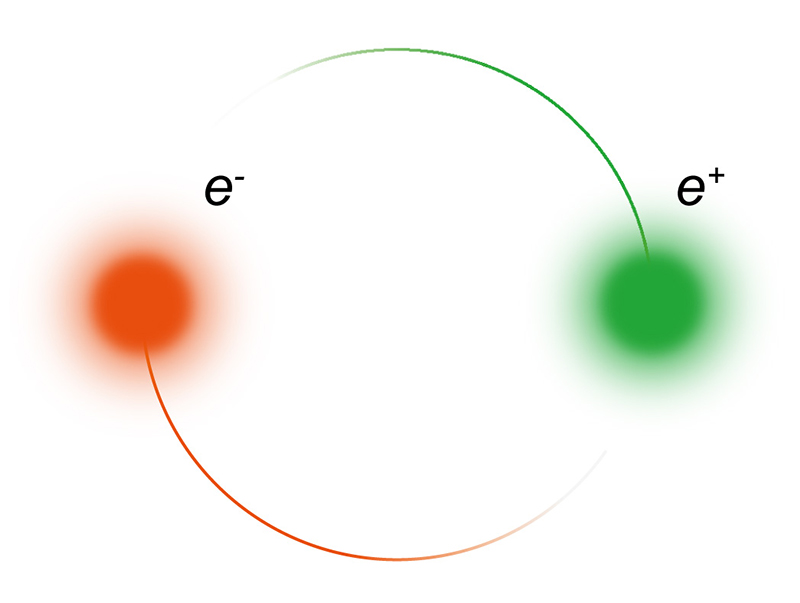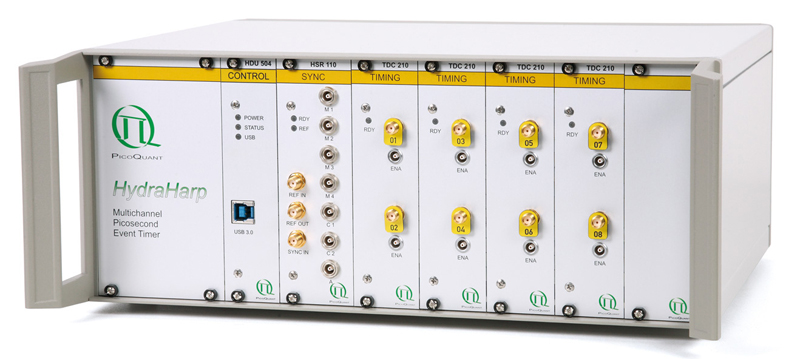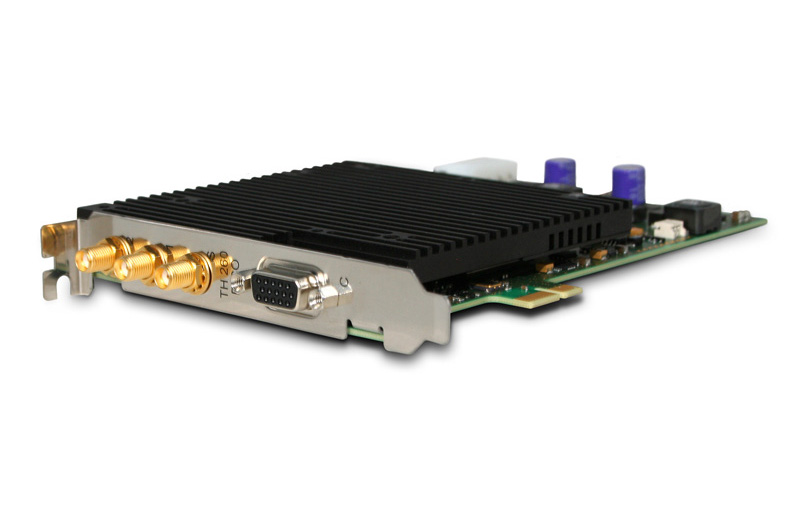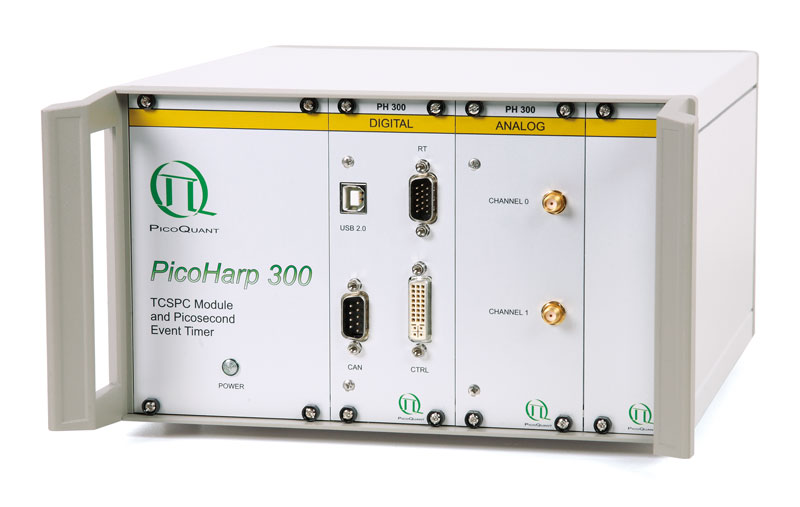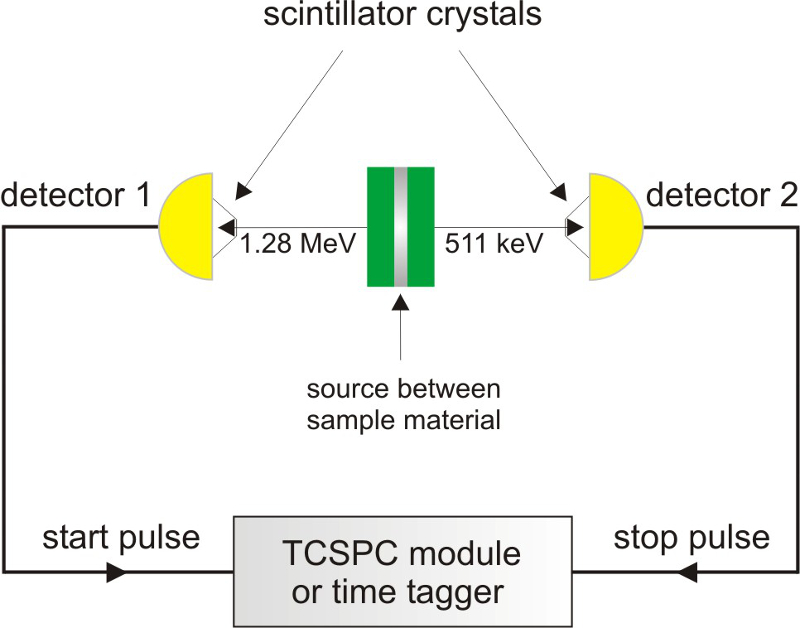Metrology
Positron Annihilation Lifetime Spectroscopy (PALS)
Measurement of atomic defects
Positron annihilation lifetime spectroscopy (PALS) is a non-destructive spectroscopy technique that allows studying a variety of phenomena and material properties on an atomic scale. PALS measures the elapsed time between the implantation of the positron into the material and the emission of annihilation radiation. Once the positron is implanted into a material, it quickly thermalises (~10 ps) and then either annihilates through interaction with electrons or forms a positronium atom. The positronium atom seeks out pores within the material where they are confined to bounce off of the walls and each time they collide with the walls there is a probability of the atom being annihilated releasing γ-rays that can be deteced with suited detectors. The lifetime of the positron can thus be used to determine the pore size of the sample. Typical examples are smallest atomic defects in crystals, metals, semiconductors and polymers or chemical structures in fluids and biological systems.


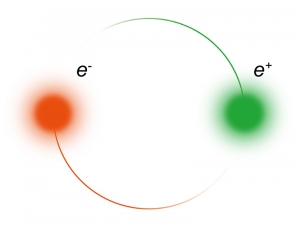
 Contact us
Contact us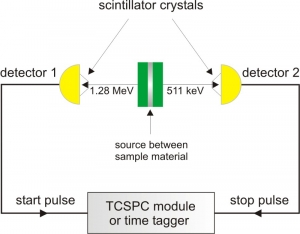
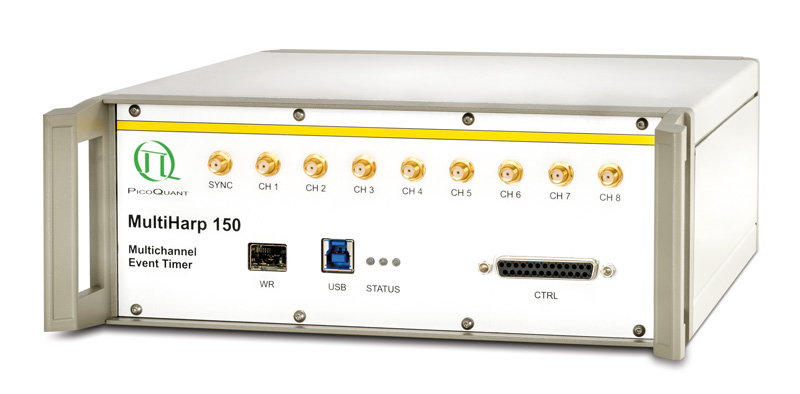 MultiHarp 150
MultiHarp 150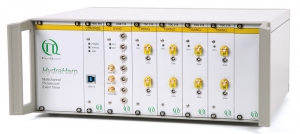 HydraHarp 400
HydraHarp 400 PicoHarp 330
PicoHarp 330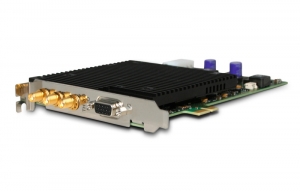 TimeHarp 260
TimeHarp 260